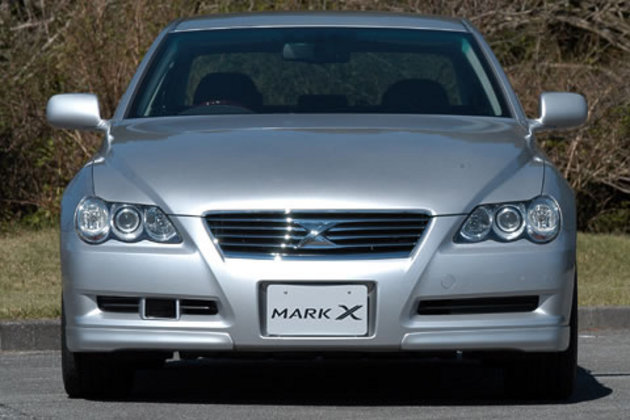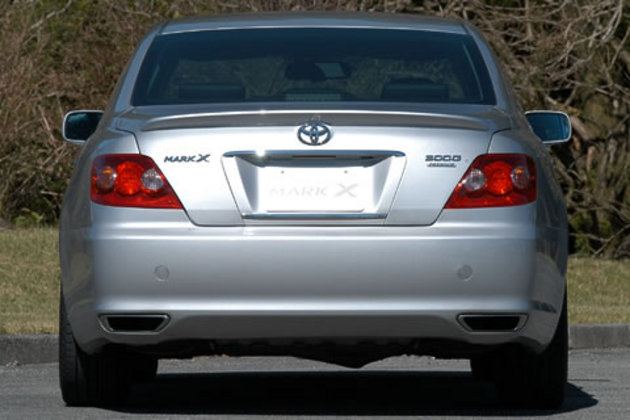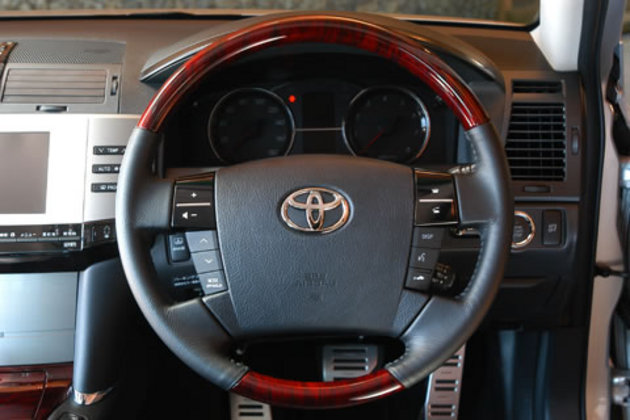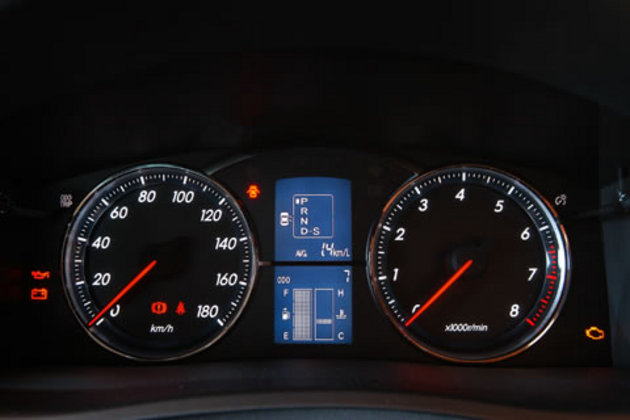Toyota Mark X (X12) in-depth explanation
ReportDecember 14, 2021
Renamed from Mark II to Mark X with the introduction of the 10th generation model
Toyota's new middle sedan, the Mark X, is the successor to the well-known Mark II. The Mark II debuted in 1968 as a high-end model of the Corona. The previous generation Mark II was the ninth generation, and the current model is the tenth generation. However, the new model was not given the Mark II name, and the tenth generation Mark II was reborn as the Mark X. The Mark X was built using the basic components of the high-end Crown model, and was developed with an emphasis on sportiness and personalization. The lineup consists of two models, a 3-liter and a 2.5-liter, and all grades are marked with "G," Toyota's code for high-grade. The basic drive system is RWD, but 4WD is also available. 3-liter models include the top-of-the-line Premium, and 2-liter models include the L package with slightly more equipment. 300 The 300G Premium and 250G are also available with the S package that comes with 18-inch tires.
A sharper, more sculpted body with more character

Compared to its predecessor, the Mark II, the body was shortened by 5 mm in length, 15 mm in width and 25 mm in height. The overall length of the body was almost unchanged, which means that the body was made wider and lower as a whole. Recently, there has been a strong tendency to increase the overall height of the car, but the height of the previous generation Mark II was already sufficiently high, so the height of the Mark X was lowered in order to achieve sharp styling. The exterior design is noteworthy for its deep and clear character lines. Although the overall design uses a lot of curved surfaces, the engine hood and front bumper have strong character lines that look like they have been gouged out with a knife, creating a massive atmosphere overall. The same goes for the side lines, with the character lines on the fenders extending to the front doors. The fender character lines extend to the front doors, and the same strong character lines are used from the rear doors through the fenders to the rear end.
High quality instrument panel with attention to materials and finishes

The overall design of the instrument panel appears to be a flat panel. However, if you look at each panel, it is given a subtle roundness and is not completely flat like the center console of the Teana. This is one area where I feel Toyota must have had a bit of trouble. One of the recent trends is to shorten the AT select lever. This Mark X also uses a very short select lever. In order to shorten the select lever, the center console had to be made higher. In the Mark II, the center console was at about the same height as the seat cushions, but in the Mark X, it is placed much higher. An interesting aspect of the instrument panel configuration is the choice of materials used for each part. The main material is a synthetic leather called "soft leather," with wood grain and metal parts interspersed. In addition, the base of the AT select lever is made of metal, while the base itself is made of translucent plastic, giving a sense of calmness, functionality, and modernity to each part.
More interior space than required for a middle saloon
The interior width of the Mark X has been increased by 35mm compared to the Mark II, and the interior space is sufficient for a middle-class car. Since the Mark II was packaged with a higher overall height, the interior height of the Mark X is lower, but it is still high enough to meet the needs. In addition, the front and rear seat pitches are 40mm wider than in the Mark II, providing more space. One of the most eye-catching features of the interior of the Mark X is the extensive use of LED lighting. There are six spotlights and four dome lamps in the front, six personal lamps in the rear, and five ceiling lights, for a total of 21 LED lights. These are mounted on the ceiling as an integrated unit, creating a unique atmosphere.
Finally, a trunk-through system for improved usability

Trunk-through is a feature that is rarely adopted in sedans above the middle class. This is due to the fact that the car has a large luggage compartment and the trunk through reduces the rigidity of the rear body, making the car look cheap ....... This time, however, the trunk-through mechanism was finally adopted in the Mark X. The Mark II had an armrest-through mechanism. This is a big step forward from the Mark II, which had an armrest-through mechanism. However, there is a setback. That is, the trunk space when not expanded. The Mark II had a trunk capacity of 475 liters, but this has been reduced to 437 liters. Even so, it can still hold four caddy bags, so I would say that from a practical standpoint there is no change, but users switching from the Mark II may feel a little confused.
All models have been upgraded to a V6 engine, and the 2WD model uses a 6-speed AT.

Like the Crown, all engines have been changed to V6. While Nissan uses the same V6 engine for both FF and FR models, Toyota uses different V6 engines for FF and FR models. The same V6 engine is used in both FF and FR models by Nissan, while Toyota uses different V6 engines in FF and FR models. The Mark X is equipped with the GR series V6 engine, the 3-liter engine is the 3GR-FSE and the 2.5-liter engine is the 4GR-FSE. The Mark X is equipped with the GR series V6 engine. Those who are familiar with engine models may have noticed that both are D-4 engines with direct cylinder injection. Conventional Toyota D-4 engines used ultra lean combustion, but this D-4 uses a stoichiometric combustion method that uses a ratio near the theoretical air-fuel ratio. The biggest advantage of direct injection is the ability to increase the compression ratio, which is set at 11.5 for the 3-liter engine and 12.0 for the 2.5-liter engine. However, premium fuel is demanded. The transmissions are all ATs, with the 2WD model using a 6-speed and the 4WD model using a 5-speed. 6-speed The 6-speed AT uses a lower gearing in first gear and a higher gearing in sixth gear to achieve better starting acceleration and lower fuel consumption. The front suspension is double wishbone and the rear is multi-link. The S package features an adaptive variable suspension system (AVS) with semi-active control and driver control. The S package features the AVS (Adaptive Variable Suspension System), which provides semi-active control and allows the driver to adjust the damping force in two levels.
Buy now!
TCV Corporation has the partnership with MOTA.
Copyrights ©2021 MOTA, All Rights Reserved.
Translated by TCV, MOTA liability, trademark, images and documents use rules apply for the original and the translation.
Reproduction and distribution of this article including images without written permission is prohibited.
This article was published in the past, and the grade status may differ from that of the exported / imported vehicle.
In case of Copyright infringement , a criminal investigation may be initiated to whether it's individual or a company.


